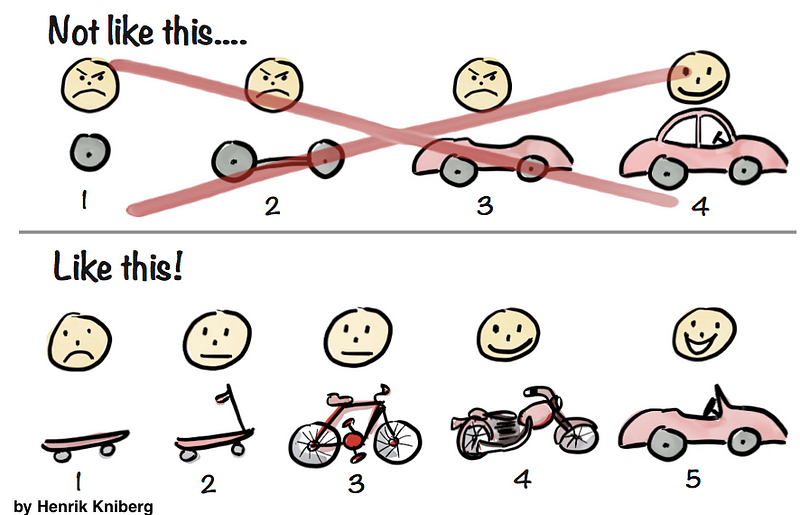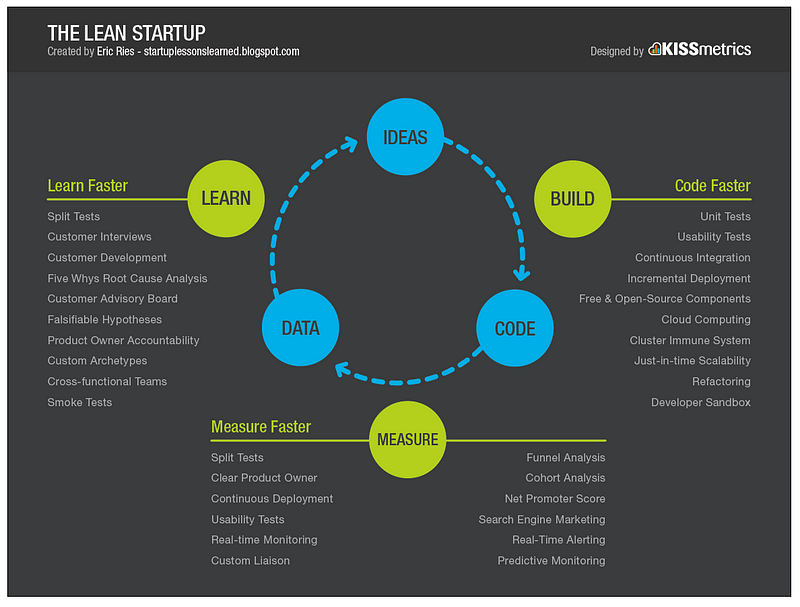
How to define your Minimum Viable Product?

Minimum Viable Product, or if I say
Minimum Buy-able product.
Sounds good ?
If not lets go deeper with what it actually means.
Minimum viable product is simply defined as :The minimum product features that can be bought or you can say that minimal which can get the early adopters and help you attain feedback from them to build the finished product.
Wikipedia says “In product development, the Minimum Viable Product (MVP) is a product with just enough features to gather validated learning about the product and its continued development.”
When we get a billion dollar idea, we straightaway think about its execution (most of the times). But what really is built in the first phase of your product roll out is your minimum viable product.
Deciding your minimum viable product is first, important and the most difficult step in execution.
How to decode MVP for next big thing?
1. Scale of your idea
You should identify your idea and the basic oxygen it needs to sustain it’s fire. Like if your idea is to build
Next generation solar bagpacks, you need to be prepared about resources you need for that. Like solar panels and bags will cost you much so you can go with crowd funding. Just create some handful number of bags with basic features and put it on Kickstarter or ycombinator or indigogo etc.
But if you want to create next Facebook like application, you just need to think about your idea and powerful features. Because scaling is easy and you can start with small investment as you will not have many customers at the beginning.
In both of the above examples, you need to focus on the cost effective features that are important but not impossible for you to implement. You need to focus on entering the market first and then you can spend to scale later.
2. Your target audience
- You must identify your target audience on the below factors

a. Age and gender
You must know who will be your users, like initially the application like Facebook will only be used by youngsters ranging from 15–25 years old.
So you should run marketing campaigns targeting this age group only. Similarly a website offering latest fashion will attract females more.
So decide on the basis of age and gender and build features according to your audience and launch in the target users segment only.
b. Region
You must identify the regional market on which you are launching.
If you launch a LTE enabled smartphone in an area with limited Internet connectivity nobody will buy your product. On the other hand, if you sell 3G smartphone in LTE enabled market, nobody will buy it too, as people already have LTE enabled smartphones available in the market.
Even if you are a global product, I suggest to launch in a limited market as this will give you better idea of customers need and help you correct any issues before going global.
c. Price
If your product comes with a price you must identify if the audience will pay for it or not. Launching in the relevant market will actually guide your product conversion later on. By Conversion I mean, cost per unit and the number of units sold.
d. Market research and survey,
Talk to people to get the idea of what they feel about such a product. Try to get the idea of how your product can solve the problems. If possible you can research the existing products in the market if any. You can talk to people about what they feel about the existing products and what should be improved. This will give you a very good idea of the gap in the market where you can start your product and fill that gap up.

3. Top 3 features
- Sit down with a pen and paper and draw the demographic of your users. Try to find the best three features in your product. Three is not a hard n fast number, you may choose any number but remember you should get into the market as soon as possible and with all important features to keep it simple and easy to understand got the end users.
- Best thing to go with minimum features is that it gives you flexibility and the courage to pivot on your idea. You get a lot more ideas for future features which you may have built opposite to market expectations. Market feedback will give you courage and motivation, which will inspire you to finish the new requirements as soon as possible and get back to your customers.
4. Cost of releasing
- You must be aware of the cost to deliver your product. Like the solar bagpacks example, it will take some money for mass production and hence setting up a factory can be a hard pick.
- So just start with very basic features and get it done with the help of some existing manufacturer. Trust me once you start thinking business you will get cost effective by your own.
Simple idea is, if you spend large money on fencing of your land then building a fully furnished home will be very very costly affair. So better is to build a small home, start living in it and renovate as per your needs & new trends in market.
5. Regional knowledge
You should think users in your mind when defining your minimum Buyable product. For example I want to launch a movie trailer app in China, I must implement English to China subtitles translation or my product will not be used as most of the people only know Chinese there, hope it made sense.
What will your MVP get you?
1. Idea validation
- If you are getting organic users it means your product is bridging up some gap in the market. Nothing is better than Your idea getting validated by the actual users. You get feedback you notice some glitches and you improve it iteratively.
- MVP is like a child which you teach, develop and bring up with time to be a mature product in the market.

2. Initial seed funding
Your initial users not only give you valuable feedback to improve product but will be your asset to showcase to venture capitalists. Your users are like a product only, looking at which venture capitalists believe in your idea and get ready to fund it till it becomes a man from a kid.
3. Idea of your target audience
In case your product doesn’t get many users, you certainly get the clear idea of two things
Either your product is not solving any problem or you are pitching in the wrong Audience, which may not be ready for your product or your product is not ready for them. This will give you a very good idea of your target audience or pivoting possibilities.
4. Demand for features
You get handsome list of features your audience want, which you may not have thought initially. If you are getting this probably it’s a good news. Your product is in circulation and probably people want to use it with additional set of features.
Good news! Well done :+1:
5. Brand name, growth engine jet.
Your first set of audience will always be honest if your product is unique and trust me they are the best marketers anyone can have ever.
They get you more users and they spread the word of mouth. Launching your MVP and then taking care of your initial set of customers will Give you browny points and good loyal customers as well.
What else, what are you thinking?
Go, get a pen and strike down your next big thing and youraudience.
Go build something, and share the word if you find this article interesting.
Share it in your network if you like it, to your friends and upcoming budding entrepreneurs.
All the best (Y)
We will be writing over how to launch in the market depending upon your product completion state in future.
Author
Rohit Sharma
Comments
Post a Comment